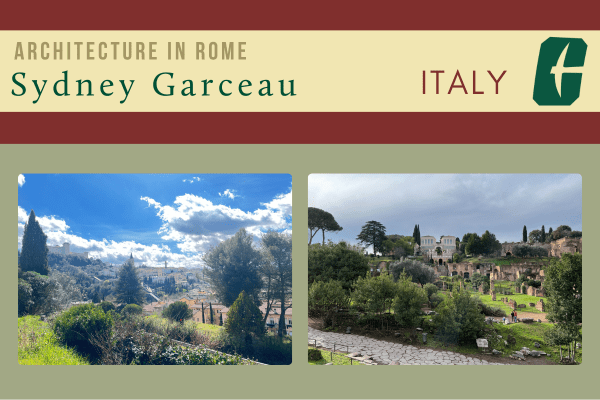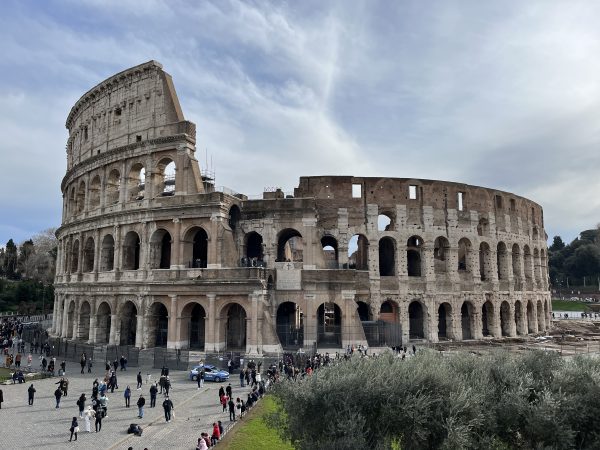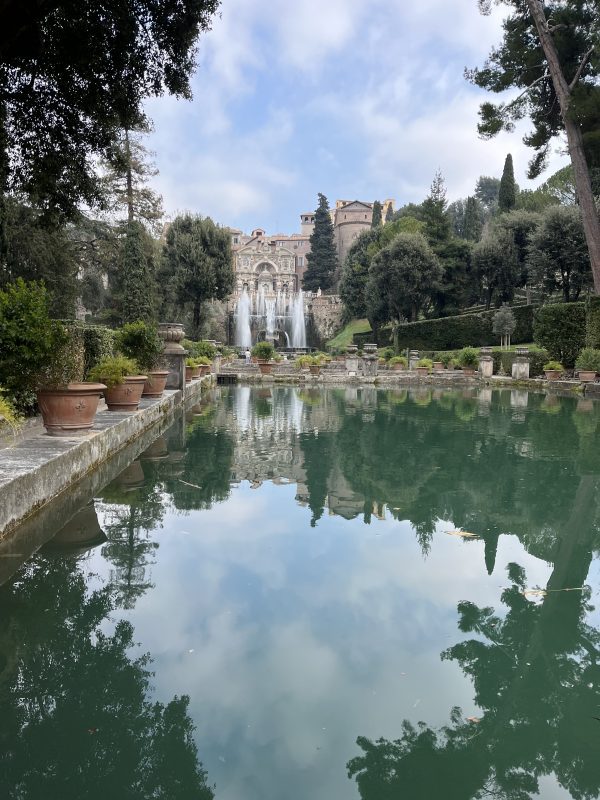Take a step back in time: italian architecture continues to amaze

By Sydney Garceau
My study abroad experience through the University of North Carolina at Charlotte is primarily housed within Rome, Italy, but I have been fortunate enough to travel on weekends to other areas around Italy and Europe at large. I have discovered within my studies guided by the University (such as the recent Tuscany field trip including Orvieto, Lucca, Pisa, and Siena) and through my own weekend trips (Assisi, Milan, Verona / Vicenza, Venice, Paris and Prague for Spring break, Naples / Pompeii, Spoleto, and Cinque Terre in the future) that there is so much to learn from others around the world, whether that is architecturally speaking, or culturally speaking.

Even within Italy, the differences from city to city give each area its own unique ‘flavor’. For example, Milan is very much a modern, contemporary city, whereas Rome (perhaps due to the nature of containing several historical monuments such as the Pantheon, Colosseum, and Roman Forum) is more of a step back in time. So many artifacts throughout Rome have been here for centuries and will continue to last on this earth for centuries more. This idea especially has impacted myself personally as I continue to grow as a person and realize time is finite and so too is architecture. As some of my professors mentioned, no one builds like Ancient Romans did anymore (walls several feet thick to stand the test of time) and will most likely continue to build with much shorter timelines in mind. The lifetime of modern architecture is the same (more or less) as the lifespan of an average person. Thus, seeing the history and layers upon layers of architecture within Italy, specifically Rome, has relayed to me the importance of creating a sustainable architecture that is designed to last and leave little negative impacts in its creation.

My time in Italy has inspired my work as an architecture student by encouraging me to consider the effects of my work more carefully on future generations to come. As ‘Rome was not built in a day’ so too did the architectural products of the past take a long time to build. In a modern setting, some projects take years, and others take months. With a high demand to build, it would be easy to get lost in the corporate race to finish projects for clients as fast as possible. However, I think my time abroad has led me to the idea that architecture at the end of the day, is not for the client but rather for the user. It is part of my responsibility to create projects that are sustainable for the future generations to come, are well thought out with the end user in mind and keep local site context in mind. Rome as a city does not erase its past or simply level out ruins to build over. Instead, ruins are gated off or integrated into the new design. In this way, the past is not forgotten, but is instead reintegrated into the new millennium. On a smaller scale, I can help to push this respect of the past for preservation into the future through my own personal projects as a student or through professional practice keeping historical preservation in the forefront.